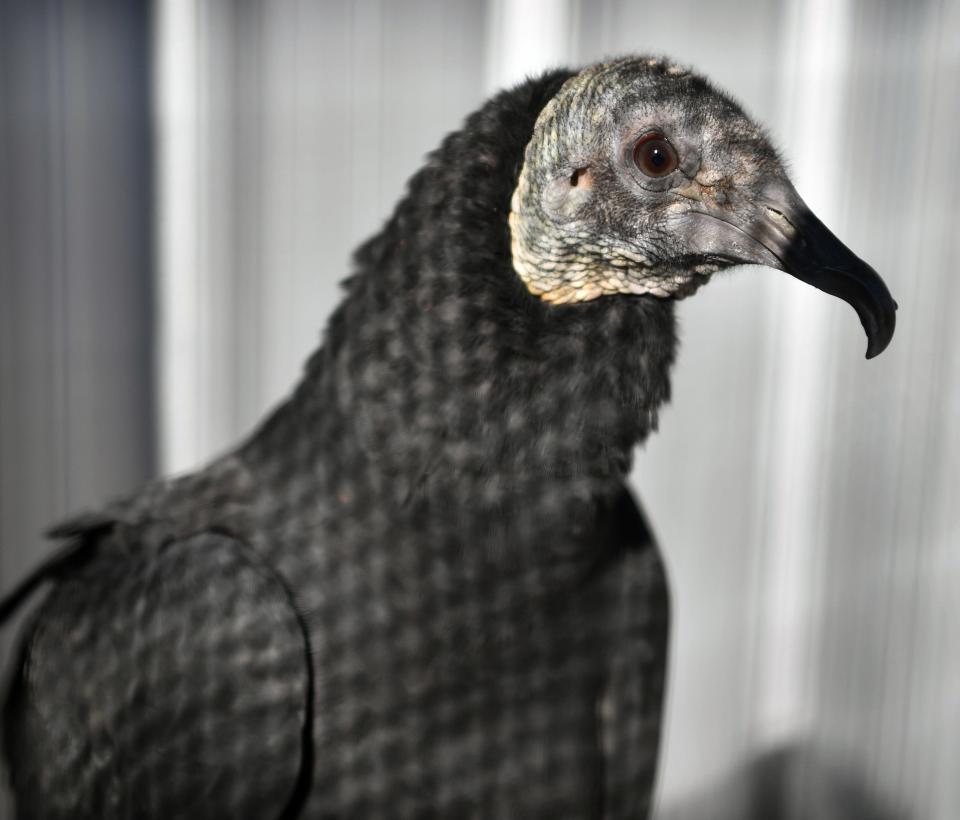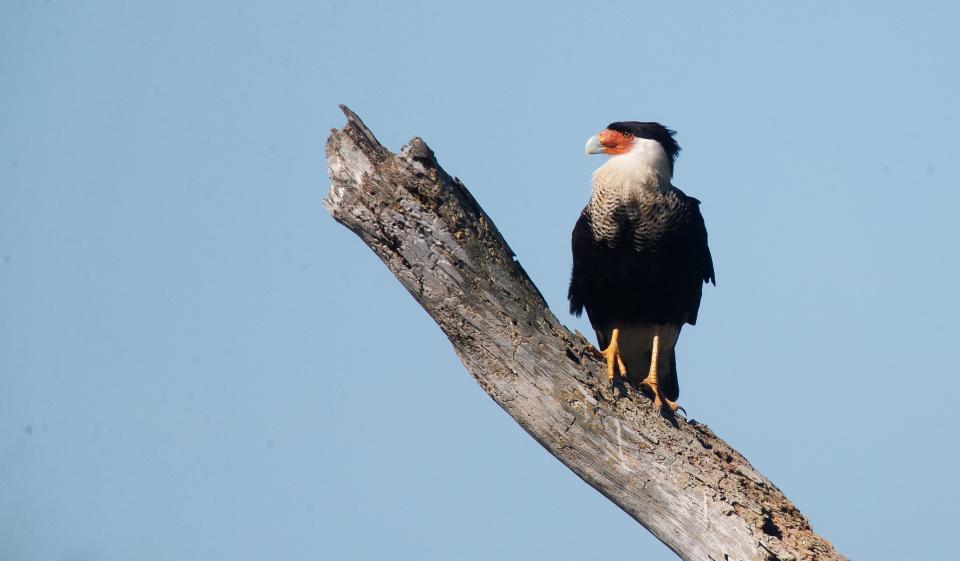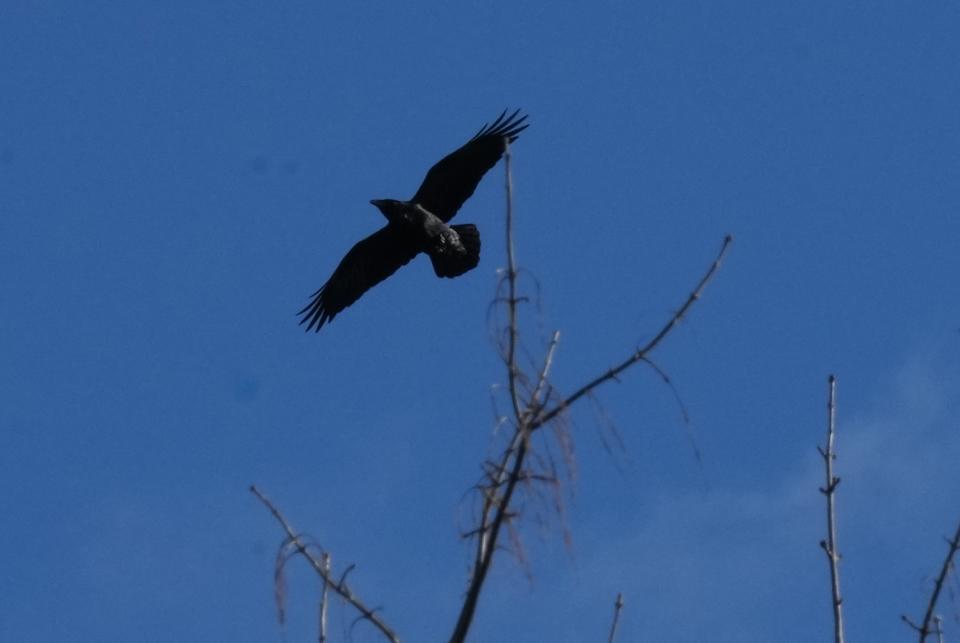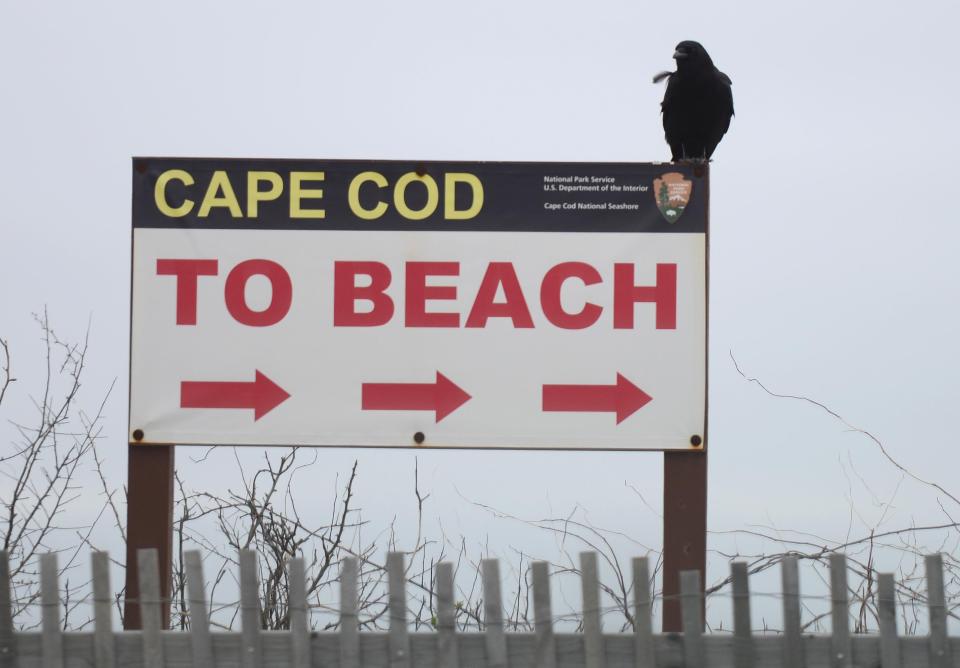Avian sanitation: These vital birds really clean up
Most of us have been in situations where we had to complete an unwelcome or unpleasant task - at least as we perceived it. Nature functions in the same way and some birds found in our area are part of what some people term the clean-up crew. They literally help keep the area clean by consuming carrion and some of our refuse in garbage dumps, along roadsides, and other areas. Although some of these birds are often thought of as unattractive, we should remember that "beauty is in the eye of the beholder" and the birds we will discuss perform vital ecological sanitation activities for us.

The most familiar of these area birds are the Black Vulture and Turkey Vulture. Black vultures are slightly smaller than Turkey Vultures and have an overall black color and black ‘bald’ heads. They have shorter, squarer tails than Turkey Vultures and the ends of their large, primary flight feathers (at the tips of their wings) are distinctly silvery and light-colored. In contrast, Turkey Vultures have bald, reddish-colored heads, longer tails, and their primary and secondary flight feathers are light whitish or silver colored when viewed from underneath. The Turkey Vulture also has a shorter bill and longer wings than Black Vultures. Turkey Vultures are more common in our area during the spring and summer months; whereas, the Black Vulture is a permanent resident species which is a bit more common in our eastern counties.

Both species will roost in the tops of dead or bare trees, utility poles, rooftops, and other perches in rural and urban areas. Also, both species often roost in groups called ‘kettles’ and can be seen spreading their wings out to the sun and wind during roosting. Vultures leave their roosts after sunrise and find rising, thermal air currents to carry them high into the skies, where they can be seen soaring almost effortlessly with only occasional, slow flaps of their wings to remain aloft. Unlike most other species of birds, vultures have a keen sense of smell, but studies are inconclusive regarding whether their carrion food items are searched out exclusively by smell or a combination of smell and sight. Black Vultures are often seen following Turkey Vultures and will sometimes drive Turkey Vultures away from carrion or other food items. Turkey Vultures feed almost exclusively upon dead animals and other refuse; whereas, Black Vultures are more aggressive and will occasionally catch and kill small animals. Both types of vultures are very specialized for a carrion diet and have strong digestive acids and enzymes to help them successfully cope with spoiled food as-well-as a flora of gut bacteria which would literally be toxic to other animals!

Another familiar area clean-up crew bird is the American Crow, and its much rarer relative, the Chihuahuan Raven. Both species are relatively large, black-colored birds, with the Chihuahuan Raven being slightly larger and with a broader, stouter bill and shaggier throat than the American Crow. Juvenile Chihuahuan Ravens have white-based neck feathers and American Crows often have variable, white patches on their wings. The two species may be distinguished by their calls. The American Crow’s call is the familiar “Caw-Caw” heard throughout our area; whereas, the Chihuahuan Raven’s call is a lower and more guttural croak or “Graak.” Chihuahuan Ravens seem to be expanding their range from the south and west but, at present, the American Crow is a more common, widespread resident of our area.

Both crows and ravens have been extensively studied and found to be highly intelligent and very adaptable. In fact legends of Native Americans and other cultures extol the cleaver natures of these birds. As an example, crows residing in cities were noted to take acorns and other hard fruits from trees and fly to the top of traffic lights. The crows would then drop the nuts down to the streets and, if the nut wasn’t cracked open by its fall, they would wait for vehicles to drive over the nuts and break them open! To further emphasize their intelligence and adaptability, the crows would then wait for the traffic lights to change to ‘red’ so that vehicles stopped before they swooped down to pick up pieces of the cracked nuts! Both species are omnivorous and feed upon a wide variety of items, but, if available, they won’t turn down a convenient meal of carrion or refuse in dump grounds and other areas. Interestingly, crows will call to each other if they find a large source of food (a large carcass for instance) and invite additional crows (a group of crows is called a ‘murder’) to their banquet! This behavior is thought to be a defense mechanism against other potential predators (or competitor species) which might be in the area.
One last, and much rarer, clean-up crew bird that you might catch sight of in the southern margins of our North Texas area is the Northern Caracara. Caracaras are related to falcons and have a very distinct appearance. They are large birds (in fact, some people refer to them as Mexican eagles) with red faces, grey bills, and a distinct black crest on the top of their heads. In contrast to adult vultures, most of their head is well-feathered. Necks and chests are white and bodies are overall brown in color. The undersides of the primary wing feathers and most of the underside of the tail is also white in color with a dark, terminal margin. Although decreasing in numbers in parts of its range, the Northern Caracara seems to be increasing its range within Texas.
Caracaras usually frequent open pasturelands when foraging and roost and nest in denser cover. Although primarily feeding upon carrion and other dead animals, Caracaras are opportunists and will hunt small animals such as birds, rabbits, skunks, and various reptiles and amphibians by flying low and capturing their prey by surprise. They are frequently seen flying over roadways in search of a carrion meal and have been observed driving away vultures from road-killed animals.
Although feared and maligned in some cultures as omens of death or misfortune, these birds are also respected, revered, and even worshipped in other cultures as signs of rebirth, friends, and helpers of mankind! We may personally perceive vultures as smelly and unattractive, but should also keep in mind the essential services that they provide for us and our ecosystems. Considering this, the next time you see vultures, crows, ravens, or even a rare Northern Caracara, you may have a new perspective regarding these birds!

Jim Goetze is a retired professor of biology and former chairperson of the Natural Sciences Department of Laredo College with an avid interest in all aspects of the natural world.
This article originally appeared on Wichita Falls Times Record News: Avian sanitation: These vital birds really clean up

